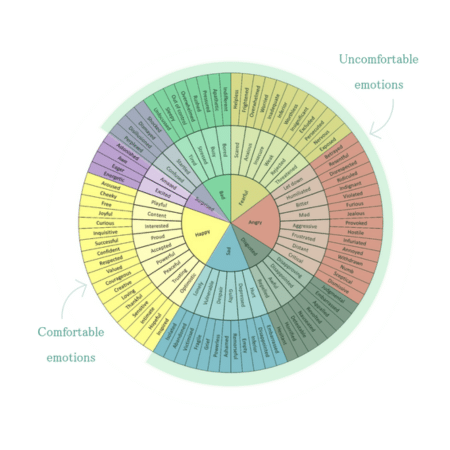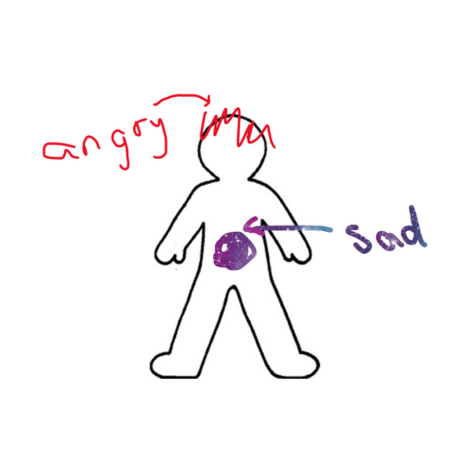Three Top Tips for Supporting Emotional Awareness in Children
Jodie Warren, SEND Coach & Consultant, Jodie Warren Coaching
30th January 2024
Share this entry:
The term ‘emotional regulation’ is bandied around on a regular basis but what does it actually mean and why is it important? Emotional regulation refers to our ability to manage how we’re feeling and how we behave in response to those feelings. For example, we might argue with someone and feel angry but recognise that it would be helpful to go for a walk or take 5 minutes out to calm ourselves before trying to resolve the disagreement. Or maybe we feel quiet but we have a friend’s party to go to, so we energise ourselves by playing a favourite song or calling a friend for a pep talk. The choices we make can change how we’re feeling so we can show up as we need or want to.
We often do this without a second thought but this process of regulating our emotions actually involves three deceptively simple stages:
- Recognising how we’re feeling
- Recognising whether that feeling needs to change
- Taking steps to change how we’re feeling
Developing our understanding of our own experience at each of these stages in turn enables us to support children’s ability to manage their emotions. In order to do this effectively we first need to develop the ability to recognise how we’re feeling. Whilst this may seem easy, for many children and adults, support can be needed to develop this self-awareness. So how can we do that?
- 1. Expand your own emotional vocabulary — even as adults we can sometimes find it difficult to express how we’re feeling with any nuance and might tend to fall back on the core emotions (shown at the centre of the emotions wheel below). This wheel can offer a great starting point for finding the right words to articulate how we’re feeling and inform discussion with children.
You could try:
- Working with children when you’re both calm think about a time when you’ve felt ‘frustrated’ or ‘proud’ and how this differed to when you or they felt ‘excited’ or ‘hurt’
- Name an emotion and invite children to think about, draw or tell a friend about a time when they felt this way
- Support children to group photos of different emotions under broader headings such as those at the centre of the wheel
Simplified emotions wheel — adapted from Robert Plutchik’s work
- Stop referring to emotions as ‘good’ and ‘bad’ — whilst recognising your emotions might sound simple, in a society where emotions are branded as ‘positive’ or ‘negative’ acknowledging and admitting how we’re feeling isn’t always easy. It can be difficult to acknowledge that we feel, for example, ‘disappointed’, ‘helpless’ or ‘jealous’ and we might instead try to avoid, deny or numb those emotions. If instead we understand that emotions are just giving us information about a situation and recognise them as ‘comfortable’ or ‘uncomfortable’, rather than good or bad, it can become easier to acknowledge and therefore process them. This experience and awareness enables us to support children more effectively and models to children that it’s OK to experience some of the bigger emotions.
You could try:
- Talk about how you’re feeling or felt in different situations, including those where you experienced uncomfortable emotions
- Change your language around emotions. Notice when you’re judging emotions as ‘good/positive’ or ‘bad/negative’ and try using ‘comfortable/uncomfortable’ instead
- Recognise how different emotions feel physically— different emotions feel different in our bodies and those physical sensations will in turn be unique to each of us. For one person anger might feel like their head is being squeezed, for another like their back or is clenching. One person might experience sadness as an overwhelming heaviness or lethargy whilst another feels it like a weight in their stomach. When we’re able to recognise emotions in our body it can help us start to tune into the signs that we’re struggling emotionally which enables us to take steps to regulate sooner rather than later. Supporting children to do this can also give children a way of telling you how they feel if they can’t find the word in the moment. For example, one child I supported described worry as feeling ‘fizzy’ and anger as feeling ‘red in my tummy’, knowing this helped us support him more effectively.
You could try:
- Explore how different emotions feel for you by drawing a picture of a person (one for you and each child) and together colouring or illustrating where and how you experience different emotions. By doing this alongside children and being prepared to be a little bit vulnerable about our emotions we model to them that emotions are safe, both to experience and express.
To find out more about how to support emotional regulation or staff and pupil wellbeing contact me on hello@jodiewarren.com or follow me here.
Why attend Childcare & Education Expo?
Join over 2,500 like-minded individuals from the early years & primary sector who are dedicated to improving their practice and their education settings.
Attend educational seminars and panel discussions to credit your CPD
Meet the experts to have your questions answered
Receive fantastic onsite offers and discounts
Experience expert-led informative hands-on workshops
Network with peers and industry players
Pick up hundreds of new products, resources, ideas and services
And most of all, enjoy a great day out with your colleagues






